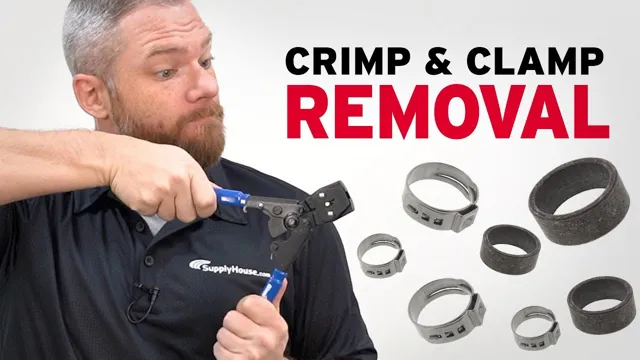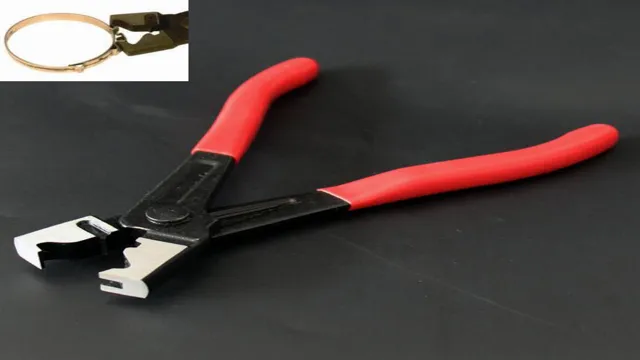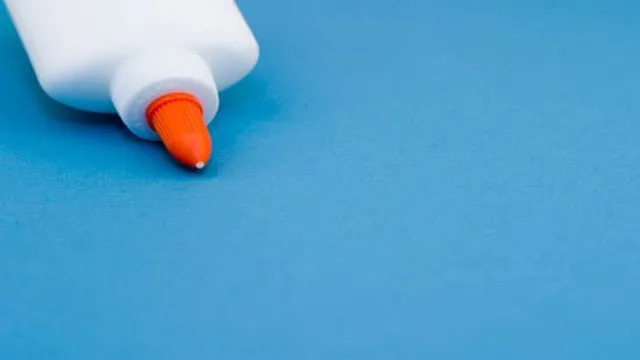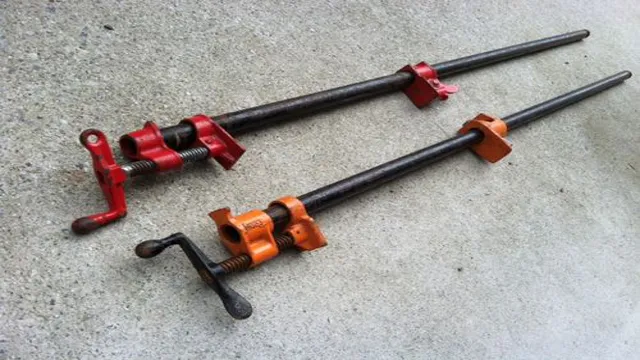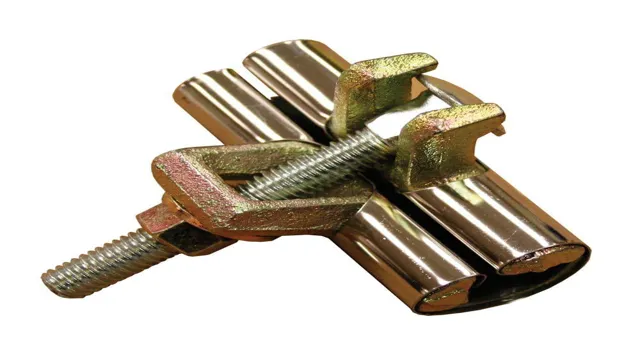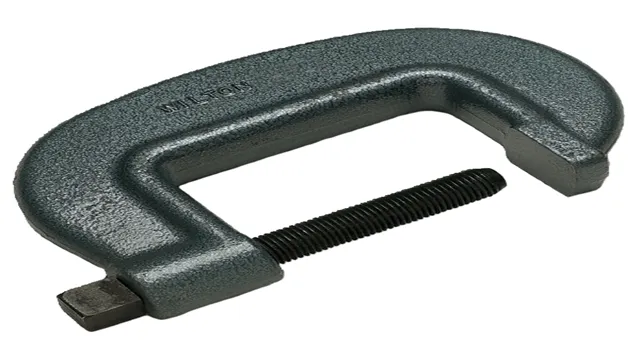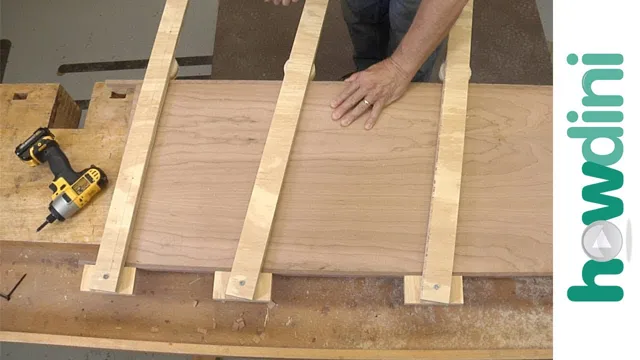How Tight to Tighten Hose Clamps: A Beginner’s Guide to Perfect Clamping?
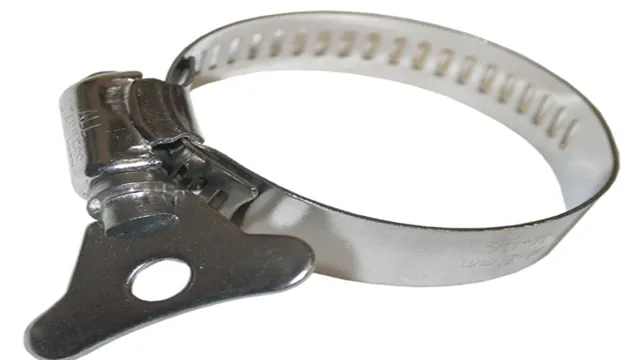
Hose clamps play an essential role in keeping your vehicle’s engine running smoothly. They secure the hoses tightly, preventing leaks and ensuring proper airflow. However, if you’re not tightening hose clamps properly, you could end up with a disaster waiting to happen.
Loose clamps can result in hoses coming off, leading to leaks, overheating, and engine damage. Not to mention, it can also be dangerous if it happens while you’re driving. So, what’s the proper way to tighten hose clamps? Let’s dive in and find out.
Understanding Hose Clamps
When it comes to hose clamps, tightening them to the correct level of tightness is crucial. If they are too loose, the hose could slip off and cause a leak. On the other hand, if the clamp is overtightened, it can actually cause the hose to burst.
So, how tight should you make your hose clamps? Ideally, they should be tightened to just the point where they are snug. You shouldn’t use too much force when tightening them. If you’re unsure of how much force to use, you can always consult with the hose manufacturer or refer to the clamp’s instructions.
Over time, it’s always a good idea to check your hose clamps to ensure that they’re still tight enough. By doing so, you can help prevent any accidents or spills from happening.
Types of Hose Clamps
Hose clamps are essential components that help in securing hoses to various fittings and prevent leaks. There are several types of hose clamps available, each with its unique design and application. The most common types of hose clamps include the worm gear clamp, spring clamp, ear clamp, and T-bolt clamp.
Worm gear clamps are the most popular type of hose clamp and are ideal for general-purpose applications. Spring clamps, also known as constant-tension clamps, are easy to install and suitable for applications where a constant force is required. Ear clamps are primarily used in applications that require a high degree of clamping force, while T-bolt clamps are ideal for applications where high tightening torque is required.
Understanding the different types of hose clamps is crucial in choosing the right one for specific applications.

Importance of Tightening Hose Clamps
Hose clamps are an essential component in any system that involves hoses. Their main purpose is to create a tight seal and prevent any leaks or spills. A loose or improperly tightened hose clamp can lead to a catastrophic failure of the system, resulting in the loss of vital fluids or even damage to the system itself.
Regularly checking and tightening hose clamps is crucial to prevent such failures from occurring. One way to ensure that clamps are properly tightened is to use a torque wrench, which can properly gauge the amount of force applied to the clamp. It’s important to remember that over-tightening can also cause damage, so finding the proper balance is key.
Don’t underestimate the importance of hose clamps and the role they play in maintaining the integrity of a system – taking the time to properly tighten them can save you time, money, and even prevent potential accidents or hazards.
Factors to Consider When Tightening Hose Clamps
When it comes to tightening hose clamps, it’s important to find the right balance between tightness and overtightening. If your hose clamp is too loose, it could cause leaks or air entering. On the other hand, if it’s overtightened, the clamp could become damaged or even break.
To ensure you’re tightening your hose clamps properly, there are several factors to consider. Some of the most important things to keep in mind include the type of hose and fitting you’re working with, the level of pressure in the system, and the material of the clamp itself. Additionally, it’s a good idea to use a torque wrench if you have one to make sure you’re applying the appropriate amount of force.
Generally, you want to tighten the clamp until it’s snug, then give it a little bit of extra tightening until you reach the desired level of tightness. Ultimately, the right level of tightness will depend on the specific situation, so be prepared to adjust your approach as needed.
Hose Material
When it comes to tightening hose clamps, one important factor to consider is the material of the hose. The material of the hose will affect both the size of the clamp needed and how tightly it can be tightened. For instance, if the hose is made of a soft material like silicone, a tighter clamp may be necessary to prevent leaks.
On the other hand, if the hose is made of a harder material like PVC, a looser clamp may be appropriate to avoid damaging the hose. Additionally, some hose materials may require a specific type of clamp, such as a worm gear clamp for smooth surface hoses or a T-bolt clamp for corrugated hoses. It’s important to make sure the appropriate clamp is used for the specific hose material to ensure a secure and leak-free connection.
By taking hose material into consideration, you can ensure a successful and long-lasting hose connection.
Clamp Material
When it comes to tightening hose clamps, the clamp material plays a crucial role in ensuring a secure fit. Factors such as the type of fluid being transported, operating temperature, and pressure levels must be considered to select the appropriate clamp material. For instance, stainless steel clamps are ideal for high-pressure applications and can withstand harsh chemical environments.
However, for applications that involve soft or thin-walled hoses, a worm-drive clamp made of plated steel or nylon may be more appropriate to prevent over-tightening or damage to the hose. Choosing the right clamp material not only ensures a secure connection but also extends the life of the hose and prevents leaks and downtime. Remember to consult industry standards and guidelines when selecting hose clamps to ensure optimal performance for your application.
Clamp Size
When it comes to tightening hose clamps, the clamp size is a crucial factor to consider. It is important to select the correct size of the clamp that fits the hose perfectly. If the clamp is too small, it will not provide enough pressure to keep the hose from leaking.
On the other hand, if the clamp is too big, it may cause damage to the hose and reduce its lifespan. It is essential to measure the diameter of the hose to choose the right size of the clamp. Additionally, choosing the right material for the clamp is also important.
Stainless steel is a popular choice as it is resistant to corrosion and has a longer lifespan. In conclusion, selecting the correct clamp size and material is crucial to ensure that the hose remains in excellent condition and does not leak or get damaged.
Steps to Tightening Hose Clamps
When it comes to tightening hose clamps, it’s important to strike a balance between being too loose or too tight. Over-tightening the clamp can damage the hose and cause leaks, while inadequately tightening can cause the hose to slip off. To avoid these issues, follow these steps.
Firstly, put on a pair of gloves to protect your hands. Next, use a flat-head screwdriver to turn the screw on the clamp until the hose feels tight but not too restrictive. Check the clamp periodically to ensure it remains tight and readjust as necessary.
Finally, consider using a torque wrench to guarantee you’re not unintentionally applying an excessive amount of force. By following these simple steps, you can guarantee your hoses are securely in place without causing any problems.
Step 1: Find the Correct Tightness
When it comes to tightening hose clamps, step one is finding the correct tightness. It may seem simple, but it can be easy to overtighten or undertighten your clamps, leading to leaks or damage. The best way to ensure the correct tightness is to use a torque wrench or other tool to measure the amount of force being applied, rather than relying on guesswork.
You should also make sure to use the correct size and type of clamp for your application, as well as checking for any damage or wear and tear on the hose or fitting. By taking these steps, you can ensure a secure and long-lasting connection for your hoses.
Step 2: Loosen the Clamp
When tightening hose clamps, it’s crucial to follow each step carefully to ensure a secure connection and prevent any leaks. Step 2 involves loosening the clamp before adjusting it to the right size. This process involves identifying the type of hose clamp being used, whether it’s a screwdriver or spring clamp, and identifying the proper tool to use.
Once you have the necessary equipment, use it to loosen the clamp by turning the screw counterclockwise or pushing the tabs open on a spring clamp. It’s crucial to avoid over-tightening the clamp, as this can cause damage to the hose or fitting. Additionally, it’s essential to check for any signs of wear or corrosion on the clamp before installation, as this can also affect its effectiveness.
Taking the time to properly loosen the clamp and check for any issues can prevent costly repairs and ensure the safety of your equipment.
Step 3: Place the Hose and Clamp
Step 3 of tightening hose clamps requires you to place the hose and clamp. Carefully slide the hose over the fitting and ensure that it is properly aligned. Then, position the clamp over the hose and fitting, making sure that it is centered and straight.
Do not overtighten the clamp at this time, as it is important to allow some wiggle room for adjustments. Once the clamp is in place, use a screwdriver to tighten it until it feels snug against the fitting. It is essential to not use too much force when tightening the clamp, or you risk damaging the hose or the fitting.
Tightening hose clamps can seem intimidating, but if done correctly, it can help prevent leaks and ensure your system runs smoothly.
Step 4: Tighten the Clamp
When it comes to tightening hose clamps, there are a few important steps to follow to ensure a secure fit. The fourth step is to actually tighten the clamp itself. To do this, you’ll need a screwdriver or an adjustable wrench.
Place the screwdriver or wrench on the screw head and turn it clockwise until the clamp is snug but not too tight. You don’t want to overtighten the clamp as this can damage the hose or cause it to leak. It’s also important to periodically check the clamp to make sure it hasn’t loosened over time.
By properly tightening the hose clamp, you can be sure your hose will stay securely connected and avoid any potential leaks or malfunctions down the line.
Final Thoughts
When it comes to hose clamps, it’s essential to get the tightness just right. Over-tightening can do damage, and under-tightening risks leaks. So, how tight to tighten hose clamps? It depends on the type of hose and clamp you’re using.
Generally, you’ll want to tighten until you feel firm resistance, but not to the point of overtightening. If the hose has visible bulging or you hear hissing sounds when you turn on the engine, you’ve likely overtightened. On the other hand, if the hose slips off when you wiggle it, it’s not tightened enough.
It’s important to pay attention when tightening hoses and clamps to avoid costly repairs. Overall, finding the right tightness takes practice, but once you get it, you’ll feel more confident in your DIY repairs.
Conclusion
In conclusion, tightening hose clamps is a delicate balancing act – too loose and you run the risk of leaks, too tight and you may cause damage to the hose or fitting. It’s important to find that sweet spot where the clamp is snug enough to maintain a secure seal, but not so tight that it causes unnecessary stress. Think of it like adding just the right amount of seasoning to your favorite dish – too little and it’s bland, too much and it’s overwhelming.
So remember, when it comes to hose clamps, a little finesse goes a long way!”
FAQs
What is the recommended torque for tightening hose clamps?
The recommended torque for tightening hose clamps is typically between 15-25 inch-pounds.
How do I know if my hose clamps are too loose?
Signs that your hose clamps are too loose may include leaks, decreased pressure, and unusual noises or vibrations.
Can over-tightening hose clamps cause damage?
Yes, over-tightening hose clamps can cause damage to both the clamp and the hose, leading to leaks and potential failure.
How often should I check my hose clamp tightness?
You should periodically check your hose clamp tightness, ideally every 6-12 months, or more frequently in high-wear applications.
What tools do I need to tighten hose clamps?
You typically only need a screwdriver or wrench, though torque wrenches can help ensure consistent and accurate tightness.
What kind of hose clamps are best for high-pressure applications?
Worm-drive clamps or T-bolt clamps may be best for high pressure applications, as they offer greater clamping force and better sealing.
Can hose clamps be re-used, or should they always be replaced?
In general, hose clamps can be re-used if they are still in good condition, though it is recommended to replace them if they show signs of wear or deformity.

